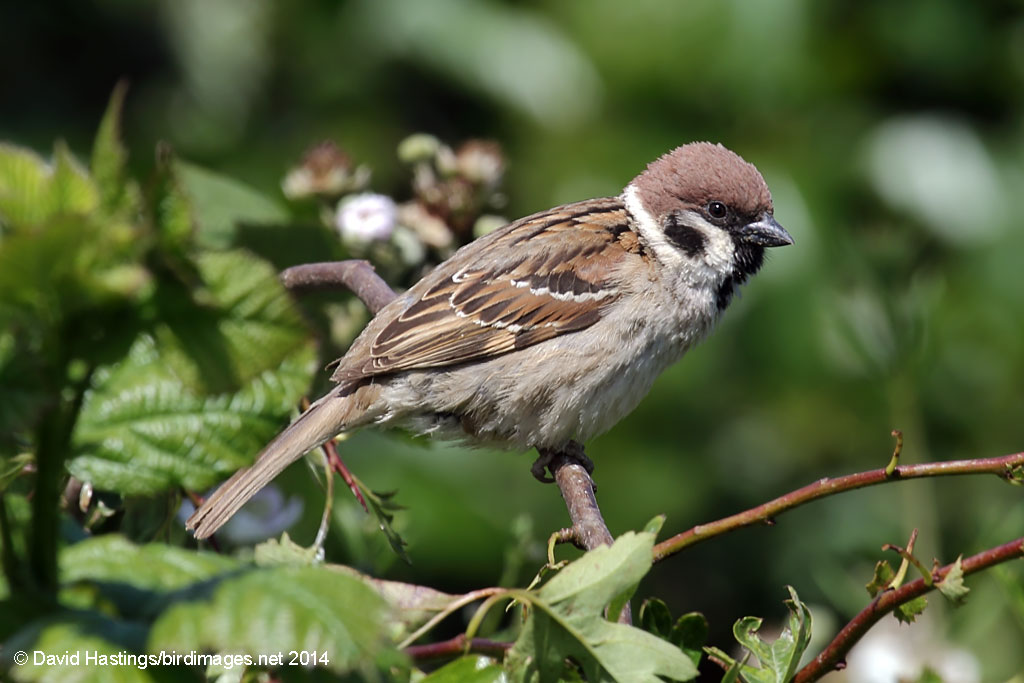Tree Sparrow (Passer montanus) | Species | ||||||||||||||||||||||||||||||||||||||||||||||||||||||||||||||||||||
Taken at Bempton Cliffs, E. Yorks, on July 1st 2014. (© David Hastings) (1/200th sec at f/13. Click image for larger version) Juvenile. Taken at Bempton Cliffs, E. Yorks, on July 1st 2014. (© David Hastings) (1/125th sec at f/11. Click image for larger version) DescriptionL: 14 - 16 cm Smaller than a House Sparrow and more active, with its tail almost permanently cocked. Adults have chestnut brown heads and napes (rather than grey), and white cheeks and collar with a contrasting black cheek-spot. The sexes are similar. The main populations are found across the Midlands, southern and eastern England. It breeds in open woodland, usually near cultivated land, but usually not in close proximity to humans. Like other sparrows, Tree Sparrows are social birds. The Tree Sparrow is a Red list species, having suffered a severe population decline since 1970. There are about 200000 breeding pairs in the UK. Sightings
| |||||||||||||||||||||||||||||||||||||||||||||||||||||||||||||||||||||


